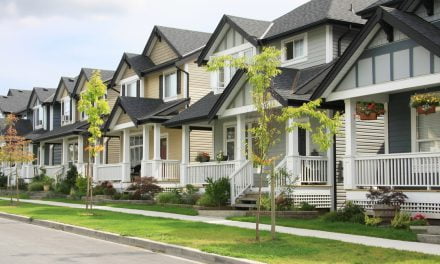As humans continue to kick around the remaining integrity of our environment and break Smokey Bear’s heart, the risk of wildfire is accelerating — especially here in California.
Fire risk is increasingly rapidly due to the double whammy of:
- higher temperatures; and
- drier conditions, creating the perfect spark for a fire to flourish, according to The New York Times.
Homebuyers are often in the dark about fire risks, only becoming aware when the darkness begins to glow with a fiery light. With such low inventory available, it’s no surprise that wildfire risk is low on the list of priorities for homebuyers seeking to get their hands on anything.
But as the dangers continue to grow alongside worsening climate change, it’s crucial for both homebuyers and sellers to be aware of areas at risk.
As of 2022, over 7.1 million properties are at risk of wildfire in California. Over the next 30 years, this number will grow to over 7.5 million properties in California which face a risk of wildfire impact, according to Risk Factor.
This estimate encompasses two-thirds of all properties across the state.
The areas which contain the most wildfire risk include the counties of:
- Riverside;
- Los Angeles;
- San Bernardino;
- San Diego; and
- Kern
California is one of the top three states at risk of wildfire, but California is predicted to take the lead within the next three decades.
In the past two years alone, California has experienced two of its largest recorded fires, according to The National Interagency Fire Center. Specifically, in 2021, the Dixie Fire burned nearly a million acres, with the threat of even bigger wildfires to come.
Related article:
How quickly are California’s wildfire-prone housing markets to bounce back after disaster?
Combatting against the heat
What can be done?
As the gatekeepers to homeownership, real estate agents and brokers can provide resources for their clients on how to prepare their homes for wildfire risks. For instance, landscaping is a huge part of prepping the home, including:
- trimming and cutting down unsafe or clustering trees;
- trimming shrubs to a maximum height of 18 inches;
- removing any vegetation within three feet of the home;
- clearing leaves and branches from the yard;
- cleaning gutters and roof debris;
- moving wood piles away from structures; and
- replacing grass or vegetation near the home or other structures with gravel.
Fire hardening is also integral to reducing the chances of wildfire impacting the home, including:
- upgrading to multi-pane tempered glass windows;
- removing combustible materials within 5 feet of windows and glass doors;
- installing weather stripping or gaskets under and around the garage door;
- replacing your roof with Class-A fire rated materials; and
- plugging gaps between the roof covering and sheathing.
Small changes can be the difference between minor and complete damage to a home when fire comes knocking on the door.
Most importantly, sellers need to disclose any known natural hazards — including wildfire risks. Areas in the state which are subject to significant fire hazards have been identified as very high fire hazard severity zones. When a property is located in a very high fire hazard severity zone, a disclosure needs to be made to the prospective buyer. [See RPI Form 314 §3]
If you are unsure whether the neighborhoods you serve are located in a fire hazard zone, you can check this ForestWatch map. In a state where two-thirds of properties are at risk of wildfire, it’s crucial for real estate professionals to be armed with the knowledge of how to help their clients prepare for the worst.
Are your clients worried about wildfire risks? Has this concern increased or remained the same during recent wildfire seasons? Weigh in by posting a comment about your experience below!














